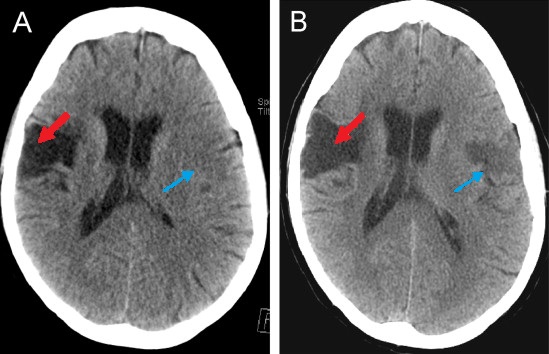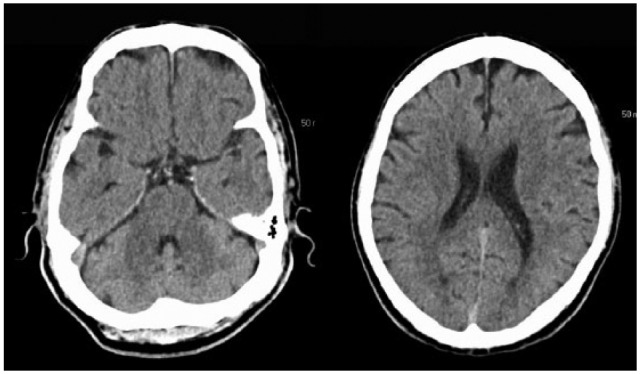Playlist
Show Playlist
Hide Playlist
Acute Ischemic Stroke (AIS): Signs & Symptoms
-
Emergency Medicine Bord Acute Ischemic Stroke.pdf
-
Download Lecture Overview
00:02 What kind of symptoms are patients going to be presenting with when they come to the hospital with concern for stroke? So the symptoms may start very suddenly or they may be stuttering. 00:13 So stuttering means that they may start and then gradually get a little bit more frequent in nature. 00:19 The symptoms are gonna be related to the area of the brain in which the blood flow is occluded. 00:25 So let's discuss typical symptoms for each occluded artery. 00:29 If there is an occlusion of the middle cerebral artery, you can find contralateral sensory loss and paralysis in the arms, lower half of the face and lower limbs. 00:39 The gaze might deviate towards the side of the infarction. 00:43 A contralateral homonymous hemianopia without a macular sparing might be present or you could see Broca's aphasia or Hemineglect. 00:52 Next, let's look at clinical features of an Anterior Cerebral Artery occlusion. 00:57 First, there could be a contralateral paralysis more in the lower than in the upper limbs. 01:02 Also a minimal sensory loss, again more in the lower than in the upper limbs is possible, and then there are typical symptoms such as Dysarthria, Aphasia, limb apraxia or urinary incontinence. 01:15 Lastly, there are the clinical features of a posterior cerebral artery occlusion. 01:20 There can be visual field defects. 01:22 For example a contralateral homonymous hemianopia with mascular sparing. 01:27 Also a contralateral hemisensory loss is possible due to the lateral thalamic involvement as well as memory deficits. 01:35 If there is an involvement of the left PCA territory, you can get symptoms such as alexia without agraphia, Anomic Aphasia or visual agnosia. 01:45 An involvement of the right PCA territory could lead to prosopagnosia. 01:50 The other very important thing that you want to try and get from either the patient, or the EMS providers or possibly their family is the timing of onset. 02:00 The main reason that we want to know the time of onset is because it will affect what treatment you're able to give your patient and it will affect whether or not you're able to give your patient thrombolytic therapy. 02:13 We always want to make sure that we urge people and tell patients that right from when they're experiencing a stroke symptoms they should try and get to the hospital as quickly as possible because the earlier they get to the hospital, the more likely it will be there were able to intervene on their stroke and to give a medication called TPA or a thrombolytic to help break up that blood clot. 02:33 We will talk more about that when we talk about the treatment of stroke.
About the Lecture
The lecture Acute Ischemic Stroke (AIS): Signs & Symptoms by Sharon Bord, MD is from the course Neurologic and Psychiatric Emergencies.
Included Quiz Questions
Ischemic stroke of which of the following arteries is most likely to present with unilateral flaccidity, forced gaze deviation, visual field cuts, and speech deficits?
- Middle cerebral artery
- Anterior cerebral artery
- Posterior cerebral artery
- Posterior inferior cerebellar artery
- Anterior superior cerebellar artery
Which of the following findings is NOT caused by stroke in the posterior circulation?
- Ipsilateral muscle weakness
- Contralateral hemisensory loss
- Memory deficits
- Visual field defects
- Ataxia
Customer reviews
5,0 of 5 stars
| 5 Stars |
|
5 |
| 4 Stars |
|
0 |
| 3 Stars |
|
0 |
| 2 Stars |
|
0 |
| 1 Star |
|
0 |





